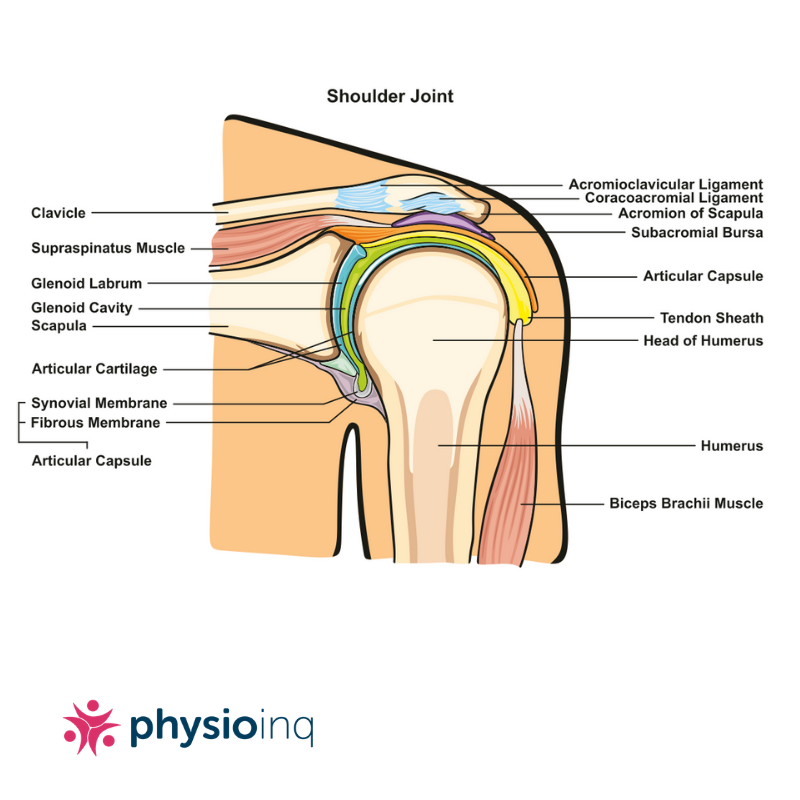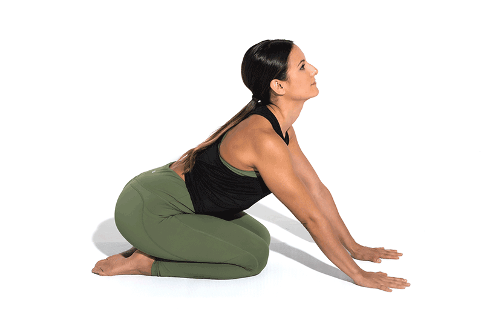Make an Appointment
Shoulder instability, whether traumatic or not can be debilitating. It causes a loss of shoulder strength and function as well as leading to significant pain. Before we delve into the ins and outs of shoulder instability, let’s first go through how a ‘normal’ shoulder functions.
The shoulder is an extremely mobile joint that enables us to reach high above our head but also allows us to reach right up behind our back, behind our head and out to the side of our body. This huge range of motion is a result of the structure of the shoulder joint. The shoulder is a ball and socket joint formed between the top of your humerus (upper arm bone) (ball) and your scapula (shoulder blade) (socket). It can be compared to a golf ball on a tee as it has a large ball centred on a very small socket. The ball and socket do not fit together tightly as you might expect. This design is excellent for achieving a large range of motion, but it comes at the expense of stability.

To make up for this, our shoulder has more than just the boney structure stabilising it. There are other structures, which contribute to shoulder stability. These can be divided into static and dynamic structures.
Static structures:
- The socket is made deeper by a fibrocartilage rim of f tissue called the labrum.
- The shoulder joint is stabilised at the end of range of motion by ligaments (tissue that holds bone to bone) and a joint capsule.
Dynamic structures:
- The shoulder contains a very important group of muscles called the rotator cuff. These muscles work together to stabilise the ball into the socket as you move your arm.
These mechanisms all work very well to stabilise a normal shoulder.
Unfortunately, one of the conditions we see relatively commonly in the clinic is shoulder instability. This means that there is unwanted, excessive movement, in one or multiple directions or planes, of the ball within the socket affecting function and comfort. The most common of these is anterior instability, meaning the ball shifts forward in the socket, normally with movement.

So what are the causes of shoulder instability?
- Trauma can lead to traumatic shoulder instability. This can be caused by trauma such as a falling onto an outstretched arm or falling onto the shoulder.
- Microtrauma from repetitive activities such as throwing, swimming or serving in tennis. This is particularly the case when these activities take place at the end of range of motion.
- Anatomical changes such as flattened or narrow socket.
- Poor muscle recruitment, particularly of the rotator cuff.
- Muscle weakness, particularly of the rotator cuff.
- Damaged shoulder ligaments.
- Hypermobility syndromes or connective tissue disorders such as Marfan syndrome or Ehlers Danlos syndrome.
Symptoms of instability can include:
- Avoiding certain shoulder positions due to pain or apprehension.
- A feeling of loose, slipping or giving out around the shoulder
- Dead, heavy or tingling feeling in arm.
- Shoulder pain in either back, front or the side of the joint.
- Recurrent dislocation or subluxation.
How can physiotherapy help with shoulder instability?
Shoulder instability can be treated both surgically and conservatively (non-surgically). Generally, the less severe the condition, the greater chance that is can successfully be treated conservatively.
Physiotherapy can help to reduce your pain levels, improve shoulder strength and improve dynamic control of the shoulder. It is important to have adequate rotator cuff muscle strength and control to centre the ball in the socket during shoulder movement in all directions. The muscles that control the shoulder blade are also important as they provide a stable base for your shoulder to work off. An adequate rehabilitation program, supervised by a physiotherapist, will address all of these factors.
Date Published: Wednesday, December 5, 2018
Locate a Mobile Physiotherapy
Service Near me
Get the experience & convinence you deserve to support your or a loved one's allied health needs.
Our Mobile Physiotherapy team are currently serving & taking appointments in the following states and regions in Australia:
Need to get into direct contact with ur Client Services team? We're all ears. Call our team directly on 1300 731 733














